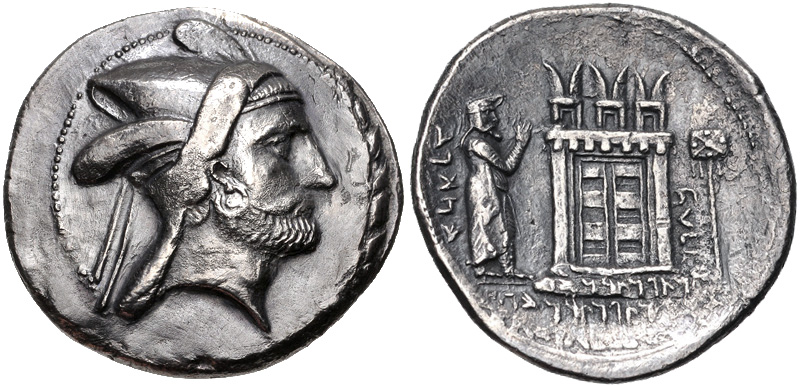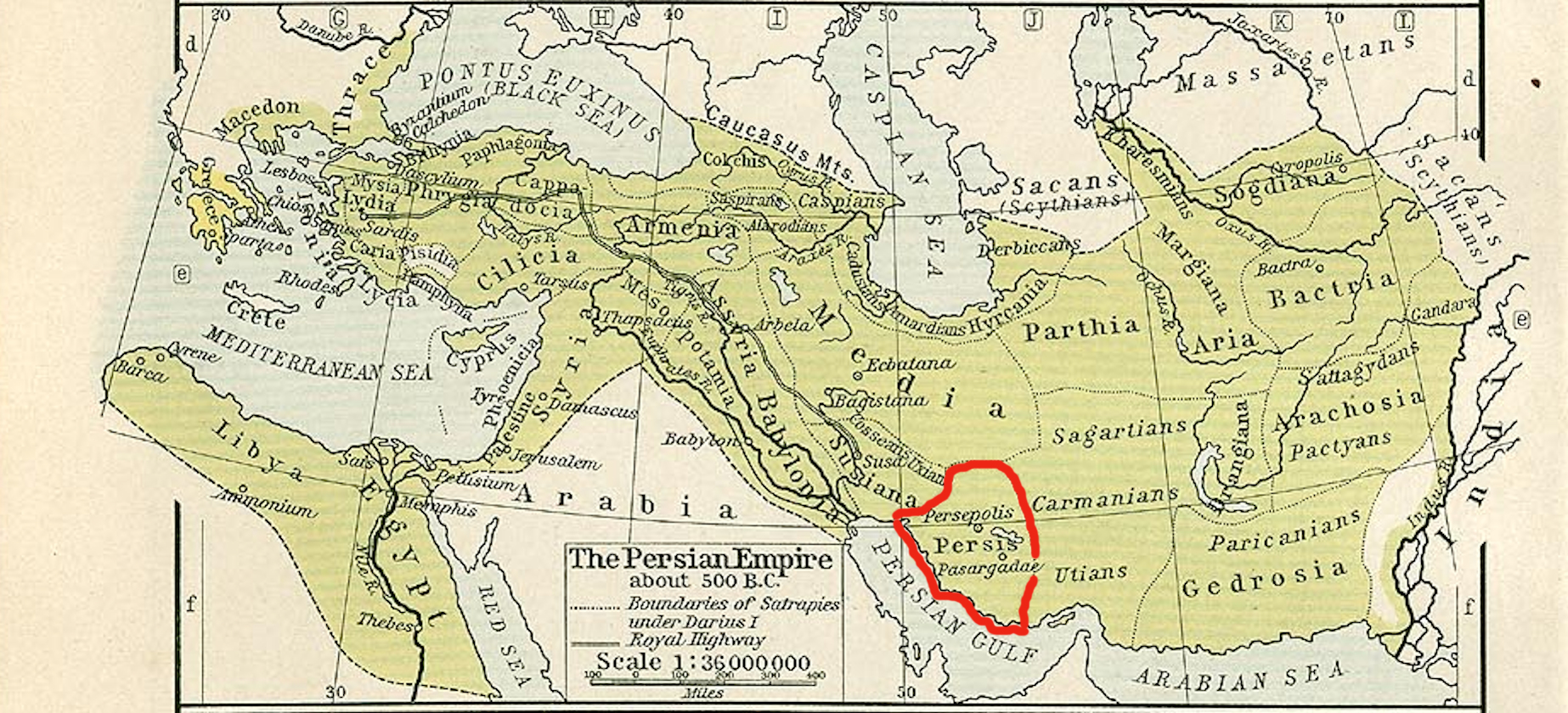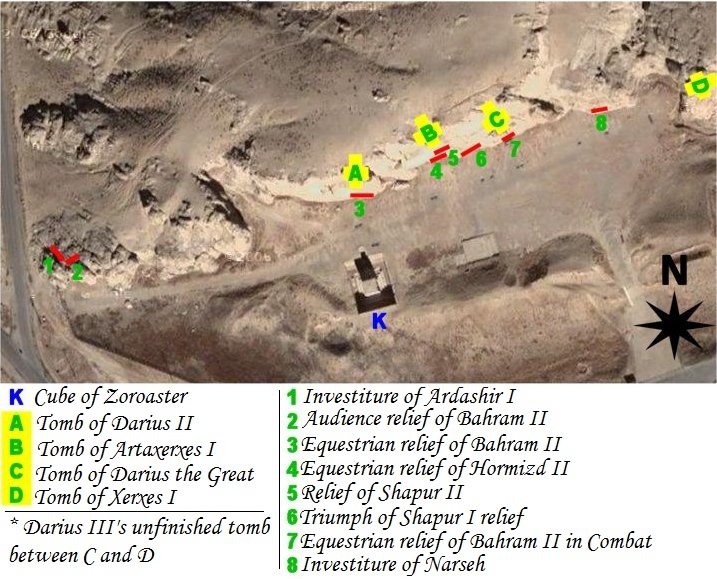|
Istakhr
Istakhr (Middle Persian romanized: ''Stakhr'', ) was an ancient city in Fars province, north of Persepolis in southwestern Iran. It flourished as the capital of the Persian '' Frataraka'' governors and Kings of Persis from the third century BC to the early 3rd century AD. It reached its apex under the Sasanian Empire (224-651 AD), and was the hometown of the Sasanian dynasty. Istakhr briefly served as the first capital of the Sasanian Empire from 224 to 226 AD and then as principal city, region, and religious centre of the Sasanian province of Pars. During the Arab conquest of Iran, Istakhr was noted for its stiff resistance, which resulted in the death of many of its inhabitants. Istakhr remained a stronghold of Zoroastrianism long after the conquests, and remained relatively important in the early Islamic era. It went into gradual decline after the founding of nearby Shiraz, before being destroyed and abandoned under the Buyids. Cursorily explored by Ernst Herzfeld and a t ... [...More Info...] [...Related Items...] OR: [Wikipedia] [Google] [Baidu] |
Pars (Sasanian Province)
Pars (Middle Persian: 𐭯𐭠𐭫𐭮𐭩 ''Pārs'')New Persian: was a Sasanian province in Late Antiquity, which almost corresponded to the present-day province of Fars. The province bordered Khuzestan in the west, Kirman in the east, Spahan in the north, and Mazun in the south. Name The Middle Persian name of "Pārs" is derived from Pārsā (𐎱𐎠𐎼𐎿), the Old Persian of the region. The English name Persia and Greek name Persis derives from this region. Administrative divisions Ardashir-Khwarrah Ardashir-Khwarrah (Middle Persian: ''Arđaxšēr-Xwarra'', meaning "glory of Ardashir") was founded by the first Sasanian king Ardashir I (r. 224–242), who made Gor (also founded around the same time) its capital. It was the seat of the '' driyōšān jādag-gōw ud dādwar'' (advocate), '' mowbed'' (chief priest) and '' andarzbad'' (councilor) of Pars. It formed the southwestern administrative division of Pars, and consisted of a mountainous countryside of the sou ... [...More Info...] [...Related Items...] OR: [Wikipedia] [Google] [Baidu] |
Shiraz
Shiraz (; ) is the List of largest cities of Iran, fifth-most-populous city of Iran and the capital of Fars province, which has been historically known as Pars (Sasanian province), Pars () and Persis. As of the 2016 national census, the population of the city was 1,565,572 people, and its built-up area with Sadra, Fars, Sadra was home to almost 1,800,000 inhabitants. A census in 2021 showed an increase in the city's population to 1,995,500 people. Shiraz is located in Southern Iran, southwestern Iran on the () seasonal river. Founded in the early Islamic period, the city has a moderate climate and has been a regional trade center for over a thousand years. The earliest reference to the city, as ''Tiraziš'', is on Elamite clay tablets dated to 2000 BCE. The modern city was founded by the Sasanian dynasty and restored by the Umayyad Caliphate in 693 CE and grew prominent under the successive Iranian peoples, Iranian Saffarid dynasty, Saffarid and Buyid dynasty, Buyid dynastie ... [...More Info...] [...Related Items...] OR: [Wikipedia] [Google] [Baidu] |
Sasanian Empire
The Sasanian Empire (), officially Eranshahr ( , "Empire of the Iranian peoples, Iranians"), was an List of monarchs of Iran, Iranian empire that was founded and ruled by the House of Sasan from 224 to 651. Enduring for over four centuries, the length of the Sasanian dynasty's reign over ancient Iran was second only to the directly preceding Arsacid dynasty of Parthia. Founded by Ardashir I, whose rise coincided with the decline of Arsacid influence in the face of both internal and external strife, the House of Sasan was highly determined to restore the legacy of the Achaemenid Empire by expanding and consolidating the Iranian nation's dominions. Most notably, after defeating Artabanus IV of Parthia during the Battle of Hormozdgan in 224, it began competing far more zealously with the neighbouring Roman Empire than the Arsacids had, thus sparking a new phase of the Roman–Iranian Wars. This effort by Ardashir's dynasty ultimately re-established Iran as a major power of late an ... [...More Info...] [...Related Items...] OR: [Wikipedia] [Google] [Baidu] |
KINGS Of PERSIS
The Kings of Persis, also known as the Darayanids, were a series of Iranian kings, who ruled the region of Persis in southwestern Iran, from the 2nd century BCE to 224 CE. They ruled as vassal kings of the Parthian Empire, until they toppled them and established the Sasanian Empire. They effectively formed some Persian dynastic continuity between the Achaemenid Empire (6th century BCE – 4th century BCE) and the Sasanian Empire (3rd century CE – 7th century CE). History Persis (also known as Pars), a region in the southwestern Iranian plateau, was the homeland of a southwestern branch of the Iranian peoples, the Persians. It was also the birthplace of the first Iranian Empire, the Achaemenids. The region served as the center of the empire until its conquest by the Macedonian king Alexander the Great (). Since the end of the 3rd or the beginning of the 2nd century BCE, Persis was ruled by local dynasts subject to the Hellenistic Seleucid Empire. These dynasts held the ancien ... [...More Info...] [...Related Items...] OR: [Wikipedia] [Google] [Baidu] |
Frataraka
Frataraka (Aramaic: ''Prtkr’𐡐𐡓𐡕𐡊𐡓’'', "governor", or more specifically "sub-satrapal governor") is an ancient Persian title, interpreted variously as “leader, governor, forerunner”. It is an epithet or title of a series of rulers in Persis from 3rd to mid 2nd century BC, or alternatively between 295 and 220 BC, at the time of the Seleucid Empire, prior to the Parthian conquest of West Asia and Iran. Studies of ''frataraka coins'' are important to historians of this period. Rulers and period Several rulers have been identified as belonging to Fratarakā dynasty (from the title ''prtrk' zy alhaya'', or "governor of the gods" on their coins): ''bgdt'' ( Baydād), ''rtḥštry'' (Ardaxšīr I), ''whwbrz'' ( Vahbarz, who is called Oborzos in Polyenus 7.40), and ''wtprdt'' ( Vādfradād I). Traditionally, they used to be considered as independent, anti-Seleucid rulers of Persis in the 3rd century BC. It seems however that they were rather representatives of t ... [...More Info...] [...Related Items...] OR: [Wikipedia] [Google] [Baidu] |
Kings Of Persis
The Kings of Persis, also known as the Darayanids, were a series of Iranian kings, who ruled the region of Persis in southwestern Iran, from the 2nd century BCE to 224 CE. They ruled as vassal kings of the Parthian Empire, until they toppled them and established the Sasanian Empire. They effectively formed some Persian dynastic continuity between the Achaemenid Empire (6th century BCE – 4th century BCE) and the Sasanian Empire (3rd century CE – 7th century CE). History Persis (also known as Pars), a region in the southwestern Iranian plateau, was the homeland of a southwestern branch of the Iranian peoples, the Persians. It was also the birthplace of the first Iranian Empire, the Achaemenids. The region served as the center of the empire until its conquest by the Macedonian king Alexander the Great (). Since the end of the 3rd or the beginning of the 2nd century BCE, Persis was ruled by local dynasts subject to the Hellenistic Seleucid Empire. These dynasts held the ancien ... [...More Info...] [...Related Items...] OR: [Wikipedia] [Google] [Baidu] |
Persis
Persis (, ''Persís;'' Old Persian: 𐎱𐎠𐎼𐎿, ''Parsa''), also called Persia proper, is a historic region in southwestern Iran, roughly corresponding with Fars province. The Persian ethnic group are thought to have initially migrated either from Central Asia or, more probably, from the north through the Caucasus. They would then have migrated to the current region of Persis in the early 1st millennium BC. Achaemenid Empire The ancient Persians were present in the region of Persis from about the 10th century BC. They became the rulers of the largest empire the world had yet seen under the Achaemenid dynasty which was established in the late 6th century BC, at its peak stretching from Thrace- Macedonia, Bulgaria- Paeonia and Eastern Europe proper in the west, to the Indus Valley in its far east. The ruins of Persepolis and Pasargadae, two of the four capitals of the Achaemenid Empire, are located in Fars. Macedonian Empire The Achaemenid Empire was defeated by Al ... [...More Info...] [...Related Items...] OR: [Wikipedia] [Google] [Baidu] |
Persepolis
Persepolis (; ; ) was the ceremonial capital of the Achaemenid Empire (). It is situated in the plains of Marvdasht, encircled by the southern Zagros mountains, Fars province of Iran. It is one of the key Iranian cultural heritage sites and a UNESCO World Heritage Site. The earliest remains of Persepolis date back to 515 BC. The city, acting as a major center for the empire, housed a palace complex and citadel designed to serve as the focal point for governance and ceremonial activities. It exemplifies the Achaemenid style of architecture. The complex was taken by the army of Alexander the Great in 330 BC, and soon after, its wooden parts were completely destroyed by fire, likely deliberately. The function of Persepolis remains unclear. It was not one of the largest cities in ancient Iran, let alone the rest of the empire, but appears to have been a grand ceremonial complex that was only occupied seasonally; the complex was raised high on a walled platform, with five "palac ... [...More Info...] [...Related Items...] OR: [Wikipedia] [Google] [Baidu] |
Buyids
The Buyid dynasty or Buyid Empire was a Zaydi and later Twelver Shi'a dynasty of Daylamite origin. Founded by Imad al-Dawla, they mainly ruled over central and southern Iran and Iraq from 934 to 1062. Coupled with the rise of other Iranian dynasties in the region, the approximate century of Buyid rule represents the period in Iranian history sometimes called the Iranian Intermezzo. The Buyid dynasty was founded by Ali ibn Buya, who in 934 conquered Fars and made Shiraz his capital. He received the ''laqab'' or honorific title of ''Imad al-Dawla'' (). His younger brother, Hasan ibn Buya () conquered parts of Jibal in the late 930s, and by 943 managed to capture Ray, which he made his capital. Hasan was given the ''laqab'' of ''Rukn al-Dawla'' (). In 945, the youngest brother, Ahmad ibn Buya, conquered Iraq and made Baghdad his capital. He was given the laqab Mu'izz al-Dawla. As Iranians of Daylamite provenance, the Buyids consciously revived symbols and practices of the Sas ... [...More Info...] [...Related Items...] OR: [Wikipedia] [Google] [Baidu] |
Middle Persian
Middle Persian, also known by its endonym Pārsīk or Pārsīg ( Inscriptional Pahlavi script: , Manichaean script: , Avestan script: ) in its later form, is a Western Middle Iranian language which became the literary language of the Sasanian Empire. For some time after the Sasanian collapse, Middle Persian continued to function as a prestige language. It descended from Old Persian, the language of the Achaemenid Empire and is the linguistic ancestor of Modern Persian, the official language of Iran (also known as Persia), Afghanistan ( Dari) and Tajikistan ( Tajik). Name "Middle Iranian" is the name given to the middle stage of development of the numerous Iranian languages and dialects. The middle stage of the Iranian languages begins around 450 BCE and ends around 650 CE. One of those Middle Iranian languages is Middle Persian, i.e. the middle stage of the language of the Persians, an Iranian people of Persia proper, which lies in the south-western Iran highlands on ... [...More Info...] [...Related Items...] OR: [Wikipedia] [Google] [Baidu] |
Iran
Iran, officially the Islamic Republic of Iran (IRI) and also known as Persia, is a country in West Asia. It borders Iraq to the west, Turkey, Azerbaijan, and Armenia to the northwest, the Caspian Sea to the north, Turkmenistan to the northeast, Afghanistan to the east, Pakistan to the southeast, and the Gulf of Oman and the Persian Gulf to the south. With a Ethnicities in Iran, multi-ethnic population of over 92 million in an area of , Iran ranks 17th globally in both List of countries and dependencies by area, geographic size and List of countries and dependencies by population, population. It is the List of Asian countries by area, sixth-largest country entirely in Asia and one of the world's List of mountains in Iran, most mountainous countries. Officially an Islamic republic, Iran is divided into Regions of Iran, five regions with Provinces of Iran, 31 provinces. Tehran is the nation's Capital city, capital, List of cities in Iran by province, largest city and financial ... [...More Info...] [...Related Items...] OR: [Wikipedia] [Google] [Baidu] |
Naqsh-e Rustam
Naqsh-e Rostam (; , ) is an ancient archeological site and necropolis located about 13 km northwest of Persepolis, in Fars province, Iran. A collection of ancient Iranian rock reliefs are cut into the face of the mountain and the mountain contains the final resting place of four Achaemenid kings, notably king Darius the Great and his son, Xerxes I, Xerxes. This site is of great significance to the history of Iran and to Iranian peoples, Iranians, as it contains various archeological sites carved into the rock wall through time for more than a millennium from the Elamites and Achaemenid Empire, Achaemenids to Sassanian Empire, Sassanians. It lies a few hundred meters from Naqsh-e Rajab, with a further four Sassanid rock reliefs, three celebrating kings and one a high priest. Naqsh-e Rostam is the necropolis of the Achaemenid dynasty ( 550–330 BC), with four large tombs cut high into the cliff face. These have mainly architectural decoration, but the facades include large p ... [...More Info...] [...Related Items...] OR: [Wikipedia] [Google] [Baidu] |









